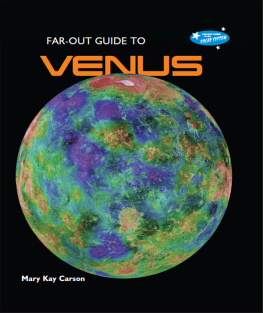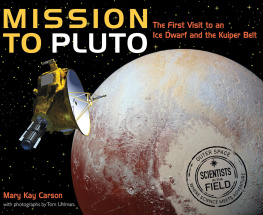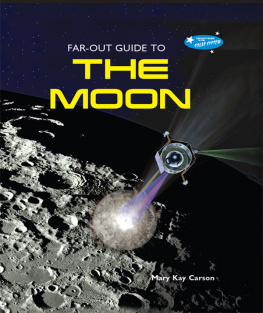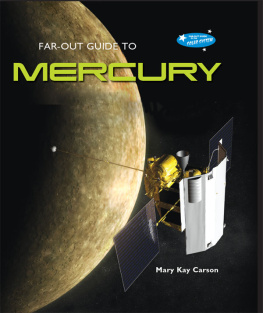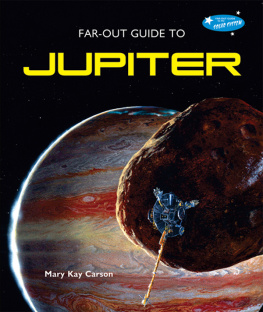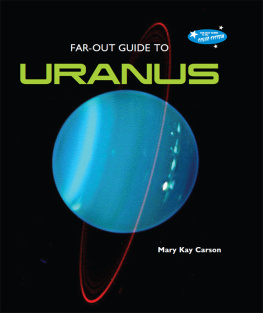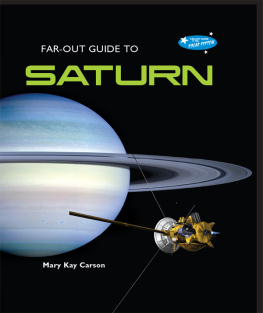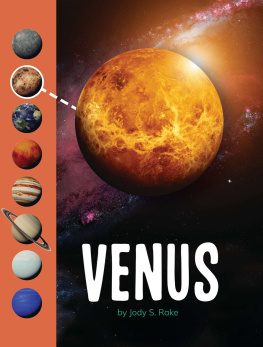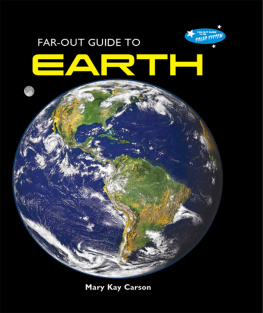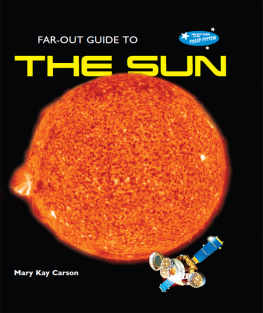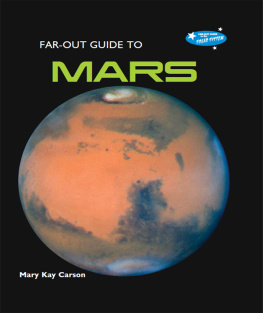
HOTHOUSE WORLD
VENUSSOMETIMES CALLED EARTH'S TWINis very similar to our home planet. However, nobody from Earth would ever be able to survive on that planet! At a scorching 462C, Venus is the hottest planet in the solar systemand poisonous clouds of gas surround it. How do we know all this?
Spacecraft from Earth have visited Venus. Learn about the amazing missions, the dedicated scientists who plan them, and more far-out facts about the second planet from the Sun.
The Far-Out Guide to the Solar System series provides valuable information about the solar system, its planets, and mankind's quest in exploring them. This series is an excellent resource for young scientists and amateur astronomers.
Bahram Mobasher, PhD, Series Science Consultant
Professor of Physics and Observational Astronomy, University of California, Riverside
About the Author
Award-winning author MARY KAY CARSON has written many nonfiction books for young people and their teachers. In 2009, she received the American Institute of Aeronautics and Astronautics Children's Literature Award.

Image Credit: NASA/JPL
Venus is the second planet from the Sun. (The planets distances are not shown to scale.)
Venus is often called Earths twin. The two planets formed next to each other, and are made up of similar materials. Earth and Venus are also each others closest neighbors, and are about the same size. If Earth were a basketball, Venus would be a slightly smaller soccer ball.
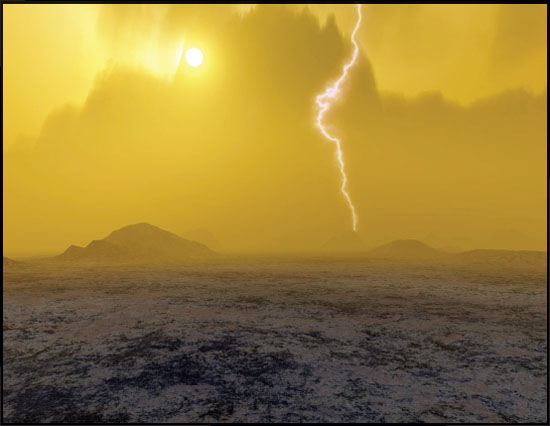
Image Credit: ESA/J.Whatmore
This illustration shows what you might see if you were hiking on Venus.
Venus and Earth are both terrestrial planets, with land and air. If you hiked around on Venus, you would see rocky mountains and valleys. (Wearing a Venus-proof space suit would be required, of course.) Gravity is not much different on Venus. You would only weigh a few pounds less there than on Earth. But your Venus hike would feel very different. It would be like walking on the bottom of a deep ocean! Venuss air is so thick, it is superheavy. The heavy weight of Venuss air pushes down, creating extreme pressure. The air pressure on Venus is about 90 times that on Earth. It is equal to having nearly a kilometer (3,000 feet) of water on top of you.

Image Credit: Lunar and Planetary Institute

Image Credit: Lunar and Planetary Institute
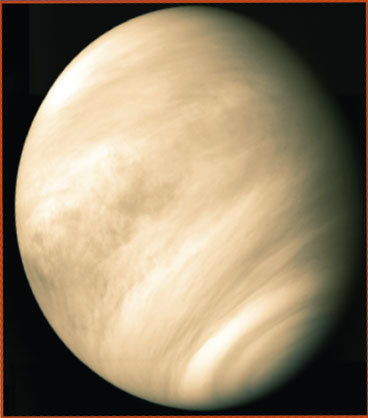
Image Credit: ESA/NASA
Venus's thick clouds and atmosphere surround the second planet.
Crushing air pressure is not the only un-Earthly thing about Venus. The weather on Venus is nightmarish. The always-orange sky is topped in spinning clouds that flash with lightning. Some of the clouds are yellow from sulfuric acid. This same chemical is in battery acid! The thick air under the acid clouds is not any friendlier. Carbon dioxide makes up most of Venuss air. That is the polluting gas that comes out of car tailpipes and factory smokestacks. And then there is Venuss extreme heat.
Venus is really hot. The second planet from the Sun is hot enough to melt some metals. Venuss average temperature of 462C (864F) turns lead, tin, and zinc into liquids. In fact, Venus is the hottest planet in our solar system. Mercury is closer to the Sun than Venus, but Venus is hotter. How did Venus get so blazing hot? It is a question scientists have worked hard to understand. The answer can give us clues about the future of Venuss twinEarth.
FAR-OUT FACT
Imagine a world where days are longer than years. Venus is just such a place! A day is the time it takes a planet to spin around once. An Earth day lasts 24 hours. On Venus, a day lasts 5,832 hours, or 243 Earth days. One trip around the Sun, a year, takes Venus225 Earth days to complete. And because Venus spins backwards, compared to Earths rotation, the Sun there sets in the east and rises in the west.
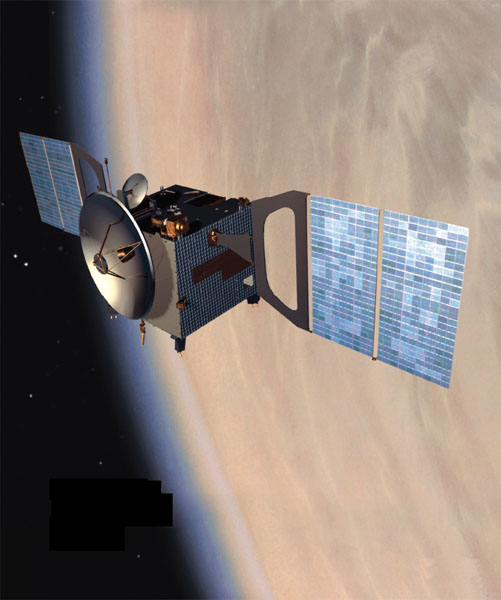
Image Credit: ESA/Medialab
Robotic spacecraft Venus Express, an orbiting space probe, arrived at Venus in 2006.
Venuss atmosphere causes its blistering temperatures. The second planets heavy blanket of air holds in heat. Venuss atmosphere is nearly all carbon dioxide, a greenhouse gas. Greenhouse gases trap heat from the Sun, like the clear ceiling of a greenhouse. Heat trapped by greenhouse gases causes global warming on planets. Venuss carbon dioxide atmosphere is an extreme case of global warming. Thats why its [nearly] 900 degrees [F] there, explains Venus expert David Grinspoon.
Venus was not always so sizzling hot. We know that Venus was once more Earth-like, says Grinspoon. It was cooler and had water. Then Venus went through an extreme global warming event. We cannot tell the full story yet, he says. [B]ut the data we are getting shows that Venus Express will reveal the history of water on Venus.
Venus Express is an orbiting space probe. It arrived at Venus in 2006. The spacecraft is giving scientists clues about Venuss cooler, wetter pastand how it compares to its twin, Earth. Venus is closer to the Sun than Earth is. This is part of the reason it is warmer. Venus gets nearly twice as much sunlight as Earth. The Sun has also gotten hotter over the 4 billion years since the planets formed. Venus Express found evidence of ancient oceans on Venus. Scientists believe that as Venuss temperature rose, more and more water evaporated. This put a lot of water vapor in the atmosphere. Water vapor is a powerful greenhouse gas and it caused the planet to heat up even more, says David Grinspoon. Venuss temperature eventually got so hot that its oceans completely boiled away.
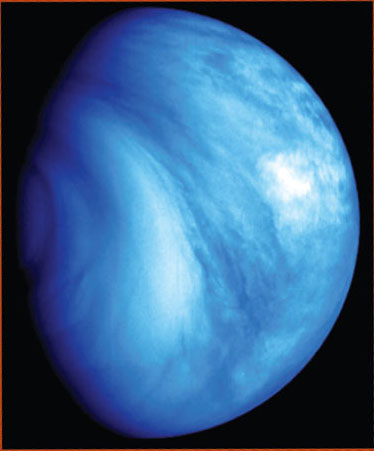
Image Credit: ESA/MPS/DLR-PF/IDA
Venus Express took this image of Venus in ultraviolet light to highlight its bright, streaky clouds.
Earth is currently going through a warming period, too. Like on Venus, greenhouse gases in the atmosphere are causing temperatures to rise. But on Earth, humans are adding extra greenhouse gases through pollution. Burning fossil fuels, such as gasoline and coal, puts carbon dioxide into the air. Will Earth end up like hothouse Venus? The global warming that humans are causing is probably not going to lead Earth to become like Venus, says Grinspoon. But studying Venuss hothouse atmosphere can help scientists understand how Earths temperature is rising.
FAR-OUT FACT
Space probes are robotic spacecraft with no astronauts onboard. Four kinds of space probes have visited Venuslanders, flybys, orbiters, and atmospheric probes (see Venus Timeline of Exploration and Discovery ). Flyby probes collect information and take photographs of a planet as they fly by it. An orbiter space probe goes into orbit around a planet, circling it many times. An atmospheric probe travels through a planets atmosphere, collecting weather information as it descends. A lander sets down on the planet.
Next page
